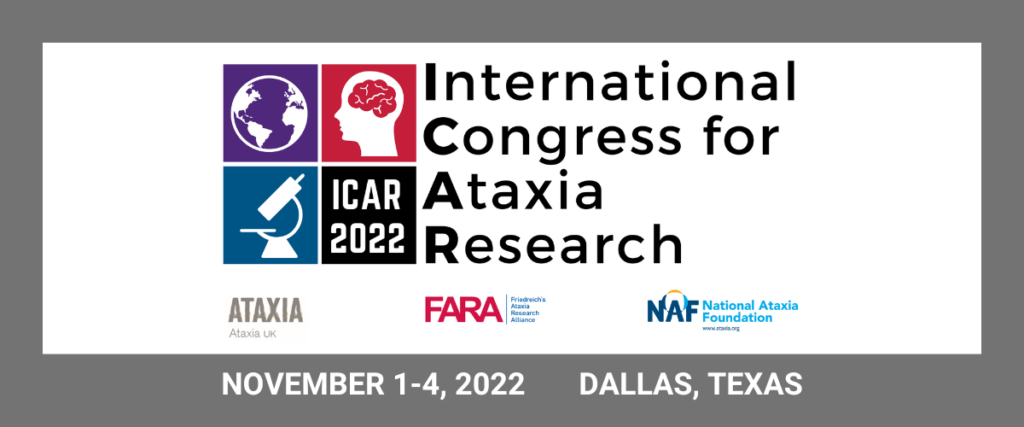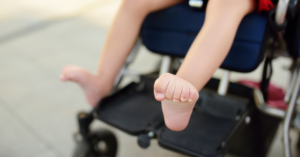
Written by Dr. Jorge Diogo Da Silva
Edited by Celeste Suart
This morning’s session looks beyond traditional drugs to new and innovative approaches for ataxia treatment, the best platforms to research ataxia in the lab, and the best symptom and quality of life scales to test them in patients.
On Thursday morning, the plenary and breakout sessions will focus on the transition from laboratory research to patients. Presenters will also talk about tools we can use to study ataxia in the lab and with patients. These sessions are very exciting as they can shine a light on the more recent breakthroughs in basic research that will be used for clinical research in the near future.
The plenary sessions on Emerging and Existing Therapies will focus on a wide range of ataxias, including ataxia telangiectasia, SCA3, Friedreich’s ataxia (FA) and Autosomal Recessive Spastic Ataxia of Charlevoix-Saguenay (ARSACS). These talks are going to focus on new and innovative approaches to treat these conditions, which go beyond the usual drug-based treatments. The results of this research have also led to important discoveries on what is going wrong in the brains and neurons of patients with ataxia. This allows us to gain a further understanding of ataxia.
Next, there will be two breakthrough sessions that will focus on models/assessment of disease: one with a laboratory focus and the other with a clinical focus.
The Cell and Animal Models session will focus on how to faithfully mimic what happens with ataxia patients in the lab. There is a strong focus on the use of cells obtained directly from patients which can be turned into the cell type we want to study, such as neurons or muscles. Some sessions will also focus on animal models that are increasingly better at replicating the human condition.
The Clinical Outcome Assessment and Natural History Studies session aims to provide new scales and techniques for improved clinical assessment of ataxia patients. These studies are focusing more and more on symptoms that are deemed more impactful by the patient in their daily lives. Previous scales did not take patient perspectives into account as strongly.
Finally, there will also be a workshop on Clinical and Genetic Work-up. This session aims to teach the participants the best of how to test patients with ataxia in the clinic. Since several ataxias can have very similar symptoms, it is important to teach doctors the best strategies. By having a more sensible approach to testing, doctors hope to provide a correct diagnosis as soon as possible to patients.
These sessions are very exciting and will certainly be very relevant for researchers, doctors, and ultimately patients!

Snapshot: What is Dysmetria?
Dysmetria is a medical term used to describe a condition that affects one’s ability to control and coordinate their movements accurately. In simpler terms, it is like having a glitch Read More…


¿Ser o no ser SCA27B? Esa es la cuestión: Misteriosos casos de ataxia resueltos gracias a los avances en tecnología genética
Escrito por Dr. Hayley McLoughlin y Dr. Sharan SrinivasanEditado por Dr. Celeste SuartTraducido por Ismael Araujo-Aliaga Una nueva tecnología de secuenciación genética reveló numerosos casos de ataxia familiar asociados a Read More…


Snapshot: What is Spasticity?
Spasticity is a condition where muscles involuntarily stiffen, impeding normal smooth movements. Spasticity can present in varying severities with varying impacts on daily life. For example, minor spasticity resulting in Read More…









